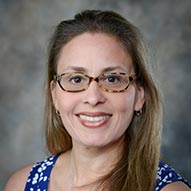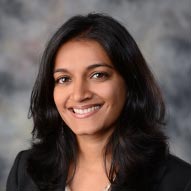Dallas
214-456-2857
Fax: 214-456-5406
Congenital means something is present “at birth.” Congenital lung disorders (also known as malformations) are usually cysts or masses that develop on the lungs in utero.
Congenital lung disorders, also known as cystic lung disease or congenital lung malformations, occur while a baby is still in its mother's womb. Most congenital lung disorders are discovered during prenatal ultrasounds. About 10 percent of congenital lung disorders are diagnosed at birth, while another 14 percent show up by age 15.
There are four general types of congenital lung disorders:
Bronchogenic cysts usually develop on the esophagus or trachea but can also sometimes be found on the lower lobes of the lung. They can compromise airways if they become infected or grow too large.
Congenital cystic adenomatoid malformations (CCAMs) form when a baby's lung tissue grows more than normal. Babies may have just a single CCAM or several. They can cause cysts that fill with fluid or solid masses in the lungs. CCAMs can also prevent the alveoli (air sacs in the lungs) from developing normally. CCAMs usually form in one lobe of the lung. (CCAMs are sometimes referred to as congenital pulmonary airway malformations or CPAMs.)
Lobar emphysema is a rare, serious condition that can interfere with an infant’s airways by trapping airflow during breathing. It can result in overinflation of the lobes of the lung.
Pulmonary sequestrations are solid masses of lung tissue. Pulmonary sequestrations don't connect to any of the lungs' airways or blood supply. They can be inside of the lungs (intralobular) or outside (extralobular) in either the chest or stomach.
Children with congenital lung disorders may have the following symptoms:
Problems associated with congenital lung disorders depend on how big the malformations are and where they’re located. Smaller cysts may have no effects at all, while larger ones can threaten your baby’s life.
Congenital lung disorders usually show up on regular prenatal ultrasounds. If your baby’s life isn’t in danger, doctors will track her condition in the womb with ultrasounds, MRIs or echocardiograms. They’re looking for any changes in size or for complications. Tests for the different types of congenital lung disorders include:
Bronchogenic cysts usually show up on a fetal ultrasound if your fetus has signs of an airway obstruction. Chest X-rays can detect the condition in newborns.
CCAMs turn up most often on routine prenatal ultrasounds. They show up as white masses, sometimes containing small dark circles. The circles are cysts that contain fluid. Some CCAMs are life threatening, so doctors will want to track your fetus closely. Although unlikely, other CCAMs may even shrink and disappear before birth.
Lobar emphysema most often shows up on a chest X-ray after your baby is born. Symptoms such as painful or difficult breathing usually show up immediately after birth. If the malformation isn't found on an X-ray, doctors may use a bronchoscope (lighted tube) to find it.
Pulmonary sequestrations are often found later in a child’s life. They usually turn up by coincidence while a doctor is looking for something else.
Most babies diagnosed with a congenital lung disorder can be carried to full term. Newborns should be delivered at hospitals with a neonatal intensive care unit in case of complications. Doctors specializing in congenital lung disorders include neonatologists and pediatric surgeons.
Around 10 percent of fetuses with CCAMs may develop a condition known as fetal hydrops. Fetal hydrops may cause fluid to build up in the lungs and can result in heart failure. Doctors use ultrasounds to keep an eye on babies with CCAMs for signs of this condition. The mother may be prescribed corticosteroids to help treat fetal hydrops in her unborn child. If steroids don't work, doctors may perform fetal surgery to fix the problem. Most often, babies with congenital lung disorders are born normally. Congenital lung disorders are most often treated with surgery.
A bronchogenic cyst may compress a baby’s airway so it needs to be carefully removed. Depending on the location of the cyst and your child’s age, a doctor may remove it using a minimally invasive surgery called a thoracoscopy. These types of cysts should always be taken out to prevent future complications such as infections or bleeding.
CCAMs may need either surgical aspiration (suctioning fluid from a lesion) or surgical removal of a mass.
A lobectomy is almost always done in the case of both lobar emphysema and pulmonary sequestration. Surgeons remove the affected lobe to prevent further damage to the lung.
Most doctors recommend waiting until your child is between 6 months and 1 year old before surgery. Older babies do better with anesthesia, yet they’re still young enough to develop normal lung function.
Except in the most serious cases, the prognosis is excellent for children with congenital lung disorders. After treatment, most children go on to lead normal, healthy lives.














They are extremely rare. The instance of CCAMs (the most common type) is between 1 in 8,300 to 1 in 35,000 births..
If your newborn wasn’t diagnosed with a congenital lung disorder in the womb, it’s not likely you’ll be able to tell once he’s born. Symptoms of malformations can look like other conditions including asthma and bronchopulmonary dysplasia (BPD). If your child is having difficulty breathing or has recurring pneumonia, see a doctor right away.
After treatment, most children with congenital lung defects fully recover and have normal development..
For more information about congenital lung disorders, please visit the following sites:
This website explains what Congenital Pulmonary Airway Malformation is and provides answers to common questions about CPAM.
This page provides information about pulmonary sequestration, congenital pulmonary airway malformation, congenital lobar emphysema, and pulmonary arteriovenous malformations.
This page explains what a congenital problem is and explains the basic anatomy behind it, the problems that may occur, and the different forms they take.
This website provides CT images of what congenital lung lesions look like in children.